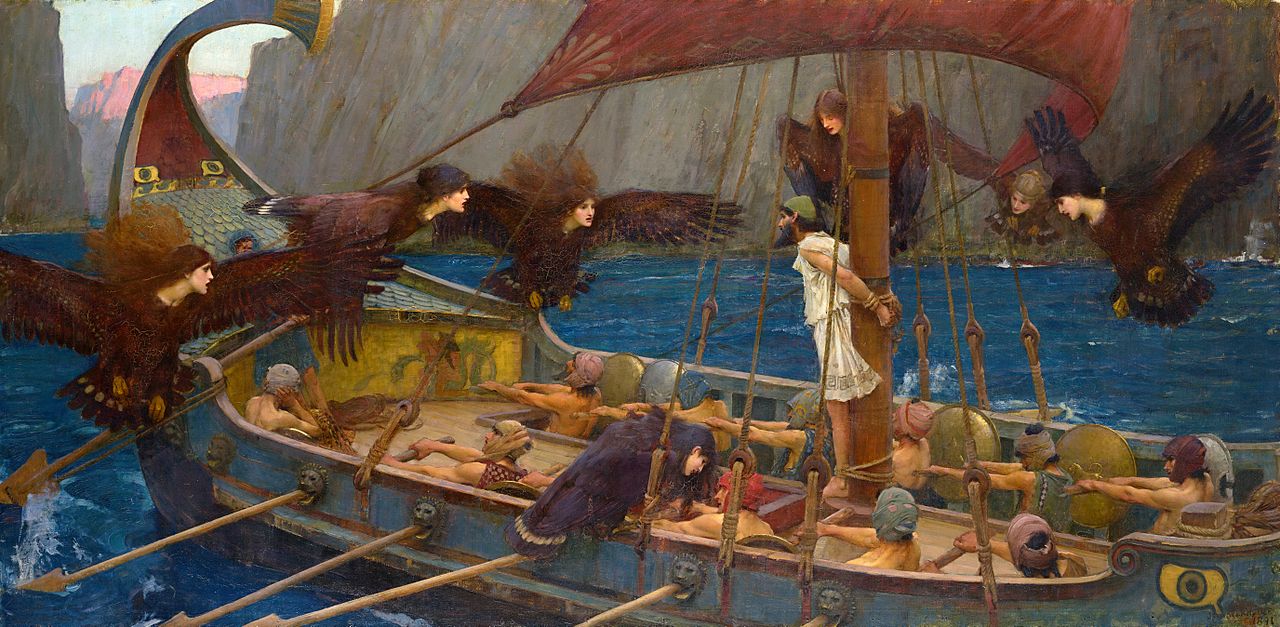This dramatic painting illustrates an episode from the journeys of the Greek hero Odysseus, as told in the ancient Greek poet Homer’s epic poem The Odyssey. The 1891 Royal Academy exhibition catalog summarized the Homeric narrative:
The Sirens, who with their melodious voices lured all navigators to destruction … were, according to classical tradition, creatures having the body of a bird with the head of a beautiful woman … They were informed by the oracle that as soon as any passed by without heeding their songs they should perish. Ulysses [the Roman name for Odysseus], warned by Circe, stopped [with wax] the ears of his companions and ordered himself to be bound to the mast, and so successfully passed the fatal coast.
But Homer did not provide a physical description of the sirens’ appearance. To achieve authenticity in his depiction, Waterhouse turned to a painted representation of the Homeric story on an ancient Greek vase at the British Museum in London. The vase showed the sirens as winged and clawed birds with human faces, a concept that was taken up by Waterhouse and that came as a surprise to Victorian audiences, who were more used to seeing these mythic creatures portrayed as comely mermaid-like nymphs.
More mythological subjects? Read about the top 5 Zeus’ lovers and their crazy stories!


 John William Waterhouse
John William Waterhouse